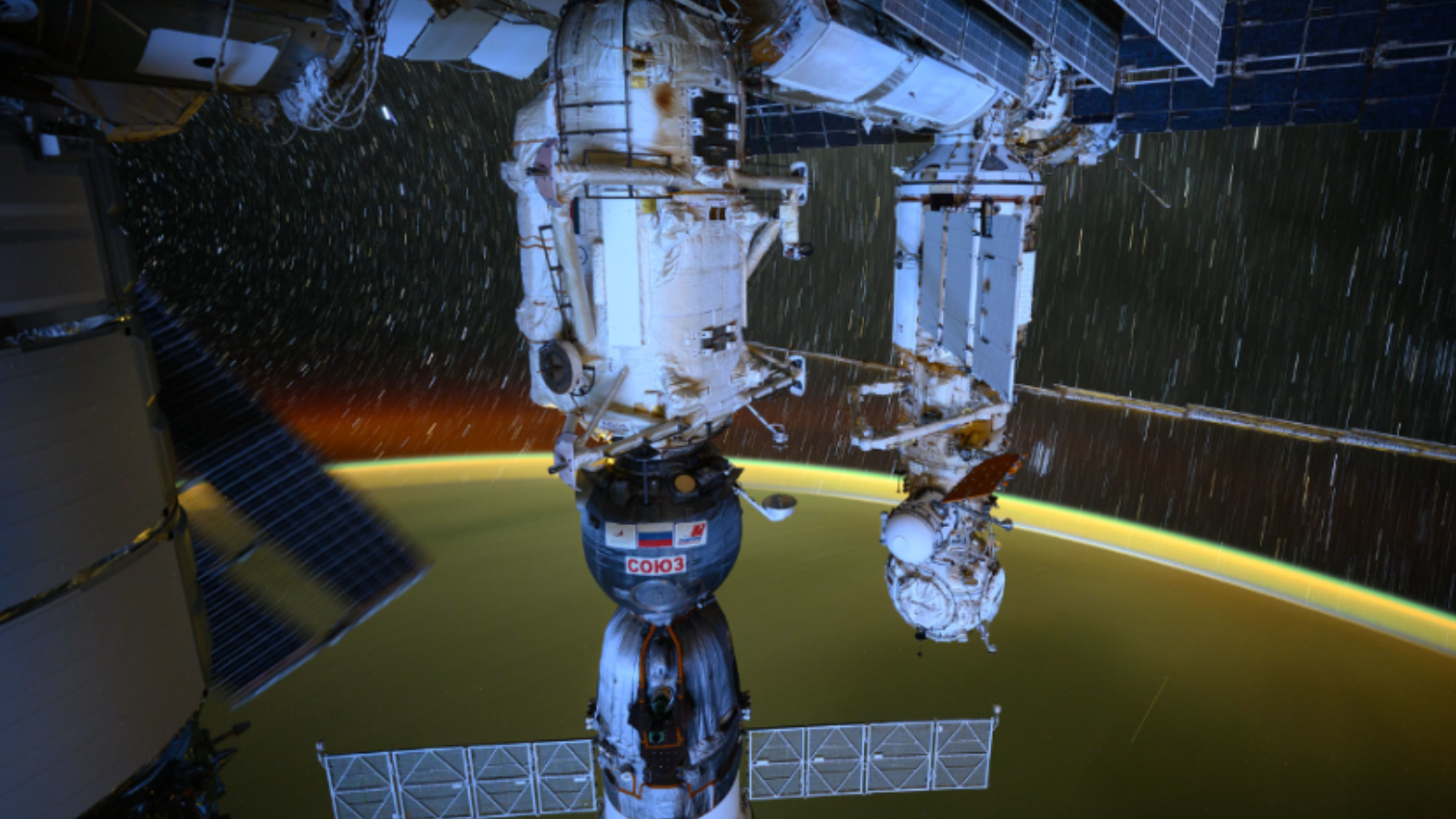The International Space Station (ISS) executed evasive maneuvers Wednesday evening (April 30) to avoid a piece of passing space debris.
Hardware from a Chinese Long March rocket that launched in 2005 was on course for a close flyby of the ISS, prompting mission operators to plan an orbital boost to put some further distance between the station and debris. The maneuver was pre-planned by NASA, the Russian space agency Roscosmos, and other international partners, according to a NASA statement.
The orbit-raising burn was performed by the Progress 91 spacecraft, docked to the Roscosmos Zvezda module. Progress 91 engaged its thrusters at 6:10 p.m. EDT (2210 GMT), firing for a total of 3 minutes, 33 seconds, to provide an extra margin of safety between the space station and the oncoming rocket junk. Without the boost, NASA estimates the fragment could have passed within 0.4 miles (0.64 kilometers) of the ISS, the statement said.
Progress 91 is docked to the aft port of the Roscosmos Zvezda module. The cargo spacecraft launched to the ISS from Russia's launch site in Kazakhstan on Feb. 27, and arrived to the space station to dock two days later.
Such maneuvers aren't uncommon for the ISS, and have increased in frequency in recent years. The most recent occurred last November, which was the first for 2024, though it was followed about a week later by another avoidance burn. Yesterday's maneuver marked the 41st orbit boosting burn performed by the ISS in its efforts avoiding space debris since 1999.
Wednesday's orbital boost had no impact on U.S. Spacewalk 93, which began around 8:00 a.m. EDT (1200 GMT), Thursday morning. The extravehicular activity (EVA) is being performed by NASA astronauts Anne McClain and Nichole Ayers, and is expected to last about 6.5 hours.
.png)
 German (DE)
German (DE)  English (US)
English (US)  Spanish (ES)
Spanish (ES)  French (FR)
French (FR)  Hindi (IN)
Hindi (IN)  Italian (IT)
Italian (IT)  Russian (RU)
Russian (RU) 









Comments